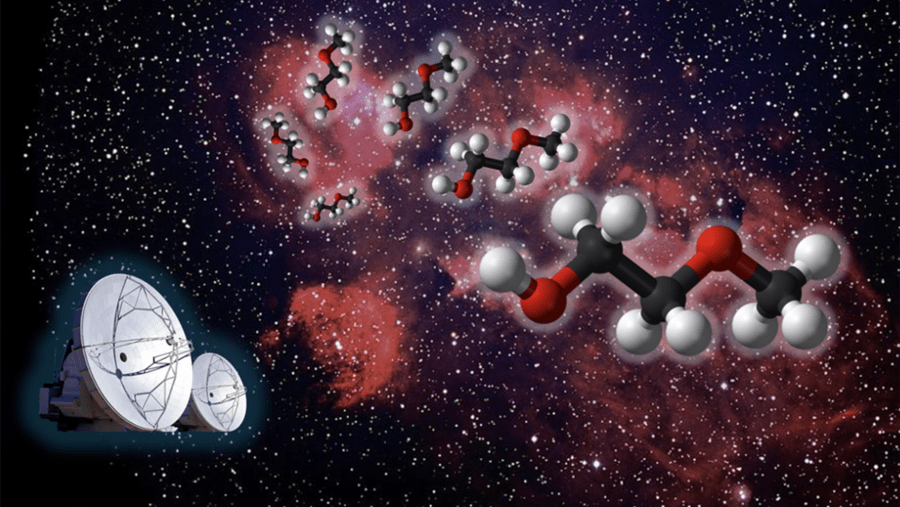New research from a group of MIT professors Brett Maguire The team’s open access paper “Rotational Spectrum of 2-Methoxyethanol from ALMA Observations of NGC 6334I and First Interstellar Detection” is published in the April 12th issue. Astrophysical Journal Letters.
Zachary T.P. Freed, Graduate Student at McGuire Group The paper’s lead author assembled a puzzle made up of pieces from MIT as well as around the world, from France to Florida, Virginia and Copenhagen, to achieve this exciting discovery.
“Our group is trying to understand what molecules are present in the regions of space where stars and solar systems eventually form,” Fried explains. “This can shed light on how chemistry evolves alongside the star and planet formation process. We do this by studying the rotational spectra of molecules – the unique patterns of light that molecules give off as they spin around in space. These patterns are molecular fingerprints, or barcodes. To detect new molecules in space, we first need an idea about the molecule we want to look for. Then we record that spectrum in a lab on Earth, and finally we use telescopes to look for it in space.”
Searching for molecules in space
The McGuire Group recently Started using machine learning It suggests suitable target molecules for the search. In 2023, one of these machine learning models suggested that the researchers target a molecule called 2-methoxyethanol.
“There are many ‘methoxy’ molecules in the universe, including dimethyl ether, methoxymethanol, ethyl methyl ether, and methyl formate, but 2-methoxyethanol may be the largest and most complex molecule observed to date,” Fried says. To detect the molecule using radio telescope observations, the group first had to measure and analyze its rotational spectrum on Earth. Combining experiments from the University of Lille (Lille, France), New College of Florida (Sarasota, Florida), and MIT’s McGuire Laboratory, the researchers measured the spectrum across a broad frequency range, from microwave to submillimeter wave ranges (approximately 8 to 500 gigahertz).
The data from these measurements enabled the search for molecules using Atacama Large Millimeter/submillimeter Array (ALMA) observations of two different star-forming regions: NGC 6334I and IRAS 16293-2422B. Members of the McGuire group, along with researchers from the National Radio Astronomy Observatory (Charlottesville, Virginia) and the University of Copenhagen in Denmark, analyzed the observations from these telescopes.
“We ultimately observed 25 rotational lines of 2-methoxyethanol that aligned with molecular signals observed toward NGC 6334I (a barcode match!), allowing us to confidently detect 2-methoxyethanol from this source,” says Fried. “This allowed us to derive physical parameters of the molecule heading toward NGC 6334I, such as abundance and excitation temperature, and also allowed us to explore possible chemical formation pathways from known interstellar precursors.”
I’m looking forward to
The discovery of such molecules helps researchers better understand the development of molecular complexity in the universe during star formation. 2-Methoxyethanol, which contains 13 atoms, is very large by interstellar standards. As of 2021, Only six species larger than 13 atoms have been detected outside the solar system.Many were discovered by McGuire’s group, and they all exist as ring structures.
“Continued observations of the macromolecule and subsequent derivation of its abundance will increase our knowledge of how efficiently it forms and what specific reactions produce it,” Fried says, “Furthermore, because this molecule was detected in NGC 6334I but not in IRAS 16293-2422B, it gives us a unique opportunity to examine how the different physical conditions in these two sources affect any chemical reactions that may occur.”
Reprinted with permission. MIT News. read Original Article.


